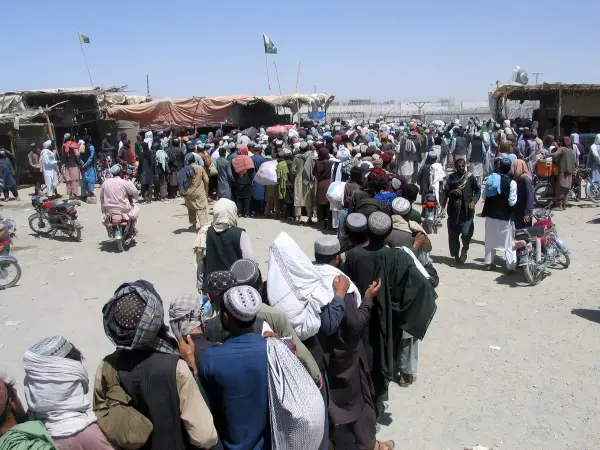Indiscriminate violence against Afghan migrants earlier this month has led to serious concerns of escalation of maltreatment of Afghans in Iran in the coming days.
At least three major instances of violence against Afghans have been reported on social media where the hashtag “Expulsion of Afghans a National Demand” was used to promote Anti-Afghan immigrants’ views.
A large crowd of Iranians on October 6 staged a protest rally outside the local council’s office in Eghbaliyeh, a town of 55,000 in Qazvin Province, wielding sticks and chanting that Afghans should be expelled from Iran. A video posted on social media also showed a small mob of mainly youngsters attacking the homes of the town’s Afghan residents and throwing stones at their windows.
A local police official, Brigadier General Ali Ebrahimi, said that police had arrested nineteen individuals for the violence. Social media users, however, reported the injury of several Afghans. They also claimed police did not take any action to protect the homes of the Afghans during the incident.
A video Iran International TV received on October 7 also showed two Afghan teenagers being treated at a Tehran hospital allegedly after being attacked and wounded by knife. The same video shows a third young Afghan man in the corridors of the same hospital saying he was also stabbed.
The narrator of the video blames the Islamic Republic for allowing mistreatment of Afghans and claims there have been many more similar instances of attacks on Afghans recently.
In another video posted on social media several Iranians are seen assaulting a young Afghan man in Sanandaj, the capital of the western province of Kurdistan where the number of Afghan immigrants has never been high compared to some other regions such as Tehran and eastern provinces. The attacker who is wielding a saber is heard in the video demanding that the Afghan man say he will never set foot in Sanandaj again.
In the past few weeks the government’s political rivals have repeatedly warned about its “open borders” policy and the possibility of hidden agenda with hardliners responding to such criticism by accusing critics of inciting “Afghan-phobia” amid fast-growing anti-Afghan sentiments on social media and violence against the immigrants.
The Islamic Republic adopted an unprecedentedly lenient approach to immigration of Afghans when hardliner President Ebrahim Raisi took office in Iran two years ago and anti-American Taliban formed a government in neighboring Afghanistan.
Some government critics claim authorities are actively encouraging the growth of the Afghan population with incentives such as subsidized energy and food to remedy the problem of population decline or even to bolster its military by recruiting young Shiite Hazara Afghans.
The Revolutionary Guards linked Fars news agency has accused a “shadowy political group” of seeking to cause tension between the Islamic Republic and the Taliban by raising an alarm about the growth of the number of Afghans in the country since the Taliban took over Afghanistan two years ago.
Heshmatollah Falahatpisheh, a former conservative lawmaker and chairman of the parliament’s foreign policy and national security committee is one of the politicians who has repeatedly warned about the security problems that may emerge from increased Afghan immigration in recent months.
Falahatpisheh claims that there is a “mafia” that financially benefits from Afghan immigration. “There is a confluence of trafficking of commodities, narcotics, humans and fuel in eastern borders whose interests are intertwined and have practically blocked the policy of blocking and management of the borders,” he told the reformist Ham-Mihan newspaper Sunday. “As a person who used to have official responsibility for field investigation in eastern borders, I must point out the reality. The country is facing a serious threat to its national security and interests.”
